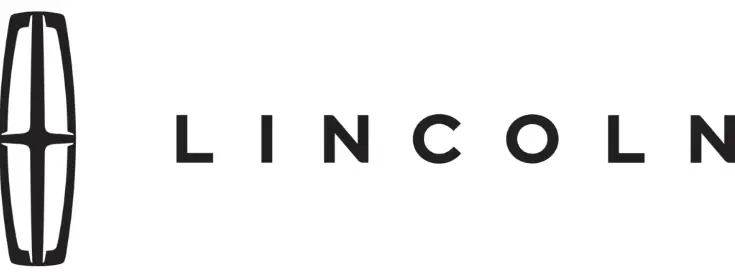2023 Lincoln Aviator Engine Oil and Fluids
Introducing the lifeblood of optimal performance: the engine oil and fluids in the 2023 Lincoln Aviator. Amidst its technological marvels, the Aviator’s heart lies in its meticulously engineered oil and fluid systems, designed to ensure peak performance, longevity, and reliability. From the engine’s lubrication to the transmission’s seamless operation, every fluid plays a crucial role in maintaining the Aviator’s exceptional performance standards. Explore the intricacies and significance of these fluids as they uphold the Aviator’s engine health and overall driving experience at the pinnacle of automotive excellence.
UNDER HOOD OVERVIEW
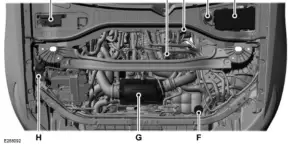
- Battery. See Changing the 12V Battery
- Engine oil filler cap.
- Engine oil dipstick.
- Engine Oil Dipstick
- Brake fluid reservoir.
- Engine compartment fuse box.
- Engine coolant reservoir. .
- Air filter assembly.
- See Changing the Engine Air Filter Washer fluid reservoir.
ENGINE OIL CHECK
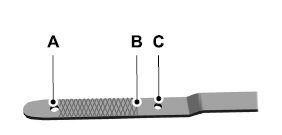
- Make sure that your vehicle is on level ground.
- Check the oil before starting the engine or switch the engine off and wait 10 minutes for the oil to drain into the oil pan.
- Remove the dipstick and wipe it with a clean, lint-free cloth.
- Reinstall the dipstick and make sure it is fully seated. Remove it again to check the oil level.
- If the oil level is between the maximum and minimum marks, the oil level is acceptable. Do not add oil.
- If the oil level is at the minimum mark, immediately add oil.
- Reinstall the dipstick. Make sure it is fully seated.
Note: The oil consumption of new engines reaches its normal level after approximately 3,000 mi (5,000 km).
Adding Engine Oil
WARNING: Do not remove the filler cap when the engine is running.
WARNING: Do not add engine oil when the engine is hot. Failure to follow this instruction could result in personal injury.
Do not use supplemental engine oil additives. They could cause engine damage that the vehicle warranty may not cover.
- Clean the area surrounding the engine oil filler cap before you remove it.
- Remove the engine oil filler cap.
- Add engine oil that meets our specifications.
- Reinstall the engine oil filler cap. Turn it clockwise until you feel a strong resistance.
Note: Do not add oil further than the maximum mark. Oil levels above the maximum mark may cause engine damage.
Note: Soak up any spillage with an absorbent cloth immediately.
OIL CHANGE INDICATOR RESET
Use the information display controls on the steering wheel to reset the oil change indicator.
From the main menu scroll to:
|
Message |
Action and description |
|
Settings |
Press the right arrow button, then from this menu scroll to the following message. |
|
Vehicle |
Press the right arrow button, then from this menu scroll to the following message. |
|
Oil Life |
Press the right arrow button, then from this menu scroll to the following message. |
|
Hold OK to Reset |
Press and hold the OK button until the instrument cluster displays the following message. |
|
|
Reset Successful |
|
|
When the oil change indicator resets the instrument cluster displays 100%. |
|
|
Remaining Life |
|
|
{00}% |
|
Message |
Action and description |
|
If the instrument cluster displays one of the following messages, repeat the process. |
CHANGING THE ENGINE AIR FILTER
WARNING: To reduce the risk of vehicle damage and personal burn injuries, do not start your engine with the air cleaner removed and do not remove it while the engine is running.
When changing the engine air filter, do not allow debris or foreign material to enter the air induction system. Engine components are susceptible to damage not covered by the vehicle Warranty.
Change the air filter element at the correct interval.
Incorrect component use can cause damage not covered by the vehicle Warranty.
To replace the air filter element do the following:
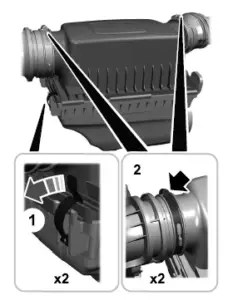
- Remove the clips that secure the air filter housing cover.
- Using a screwdriver, loosen two clamps on either side of the air filter housing cover.
- Gently pull the two boots back away from the air filter housing cover.
- Carefully lift the air filter housing cover.
- Remove the air filter element from the air filter housing.
- Wipe any dirt or debris from the air filter housing and cover to make sure no dirt gets in the engine and that you have a good seal.
- Install a new air filter element. Be careful not to crimp the filter element edges between the air filter housing and cover. This could cause filter damage and allow unfiltered air to enter the engine if it is not properly seated.
- Install the air filter housing cover.
- Engage the clips to secure the air filter housing cover to the air filter housing.
- Reconnect the two boots on the air filter housing cover and torque to 3.69 lb.ft (5 Nm).
ENGINE COOLANT CHECK
WARNING: Do not remove the coolant reservoir cap when the engine is on or the cooling system is hot. Wait 10 minutes for the cooling system to cool down. Cover the coolant reservoir cap with a thick cloth to prevent the possibility of scalding and slowly remove the cap. Failure to follow this instruction could result in personal injury.
WARNING: Do not put coolant in the windshield washer reservoir. If sprayed on the windshield, coolant could make it difficult to see through the windshield.
WARNING: To reduce the risk of personal injury, make sure the engine is cool before unscrewing the coolant pressure relief cap. The cooling system is under pressure. Steam and hot liquid can come out forcefully when you loosen the cap slightly.
When the engine is cold, check the concentration and level of the coolant at the intervals listed in the scheduled maintenance information.
Note: Make sure that the coolant level is between the MIN and the MAX marks on the coolant reservoir.
Note: Coolant expands when it is hot. The level may extend beyond the MAX mark.
Maintain coolant concentration within 48%to 50%, which equates to a freeze point between -29°F (-34°C) and -35°F (-37°C). Coolant concentration should be checked using a refractometer. We do not recommend the use of hydrometers or coolant test strips for measuring coolant concentration.
Adding Coolant
WARNING: Do not add coolant further than the MAX mark.
WARNING: Do not add coolant when the vehicle is on or the cooling system is hot. Failure to follow this instruction could result in personal injury.
WARNING: Do not remove the coolant reservoir cap when the engine is on or the cooling system is hot. Wait 10 minutes for the cooling system to cool down. Cover the coolant reservoir cap with a thick cloth to prevent the possibility of scalding and slowly remove the cap. Failure to follow this instruction could result in personal injury.
WARNING: Do not put coolant in the windshield washer reservoir. If sprayed on the windshield, coolant could make it difficult to see through the windshield.
Note: Do not use stop leak pellets, cooling system sealants, or non-specified additives as they can cause damage to the engine cooling or heating systems. Resulting component damage may not be covered by the vehicle Warranty.
Note: Automotive fluids are not interchangeable.
It is very important to use prediluted coolant approved to the correct specification in order to avoid plugging the small passageways in the engine cooling system. Do not mix different colors or types of coolant in your vehicle. Mixing of engine coolants or using an incorrect coolant may harm the engine or cooling system components and may not be covered by the vehicle Warranty.
Note: If prediluted coolant is not available, use the approved concentrated coolant diluting it to 50/50 with distilled water. Using water that has not been deionised may contribute to deposit formation, corrosion and plugging of the small cooling system passageways.
Note: Coolants marketed for all makes and models may not be approved to our specifications and may cause damage to the cooling system. Resulting component damage may not be covered by the vehicle Warranty.
If the coolant level is at or below the minimum mark, add prediluted coolant immediately.
To top up the coolant level do the following:
- Unscrew the cap slowly. Any pressure escapes as you unscrew the cap.
- Add prediluted coolant approved to the correct specification.
- Add enough prediluted coolant to reach the correct level.
- Replace the coolant reservoir cap. Turn the cap clockwise until it contacts the hard stop.
- Check the coolant level in the coolant reservoir the next few times you drive your vehicle. If necessary, add enough prediluted engine coolant to bring the coolant level to the correct level.
If you have to add more than 1.1 qt (1 L) of engine coolant per month, have your vehicle checked as soon as possible. Operating an engine with a low level of coolant can result in engine overheating and possible engine damage.
In case of emergency, you can add a large amount of water without engine coolant in order to reach a vehicle service location. In this instance, qualified personnel:
- Must drain the cooling system.
- Chemically clean the coolant system.
- Refill with engine coolant as soon as possible.
Water alone, without engine coolant, can cause engine damage from corrosion, overheating or freezing.
Do not use the following as a coolant substitute:
- Alcohol.
- Methanol.
- Brine.
- Any coolant mixed with alcohol or methanol antifreeze.
Alcohol and other liquids can cause engine damage from overheating or freezing.
Do not add extra inhibitors or additives to the coolant. These can be harmful and compromise the corrosion protection of the coolant.
Recycled Coolant
We do not recommend the use of recycled coolant as an approved recycling process is not yet available.
Note: Dispose of used coolant in the appropriate manner.
Follow your community’s regulations and standards for recycling and disposing of automotive fluids.
Severe Climates
If you drive in extremely cold climates:
- It may be necessary to increase the coolant concentration above 50%.
- A coolant concentration of 60% provides improved freeze point protection.
- Coolant concentrations above 60%decrease the overheat protection characteristics of the coolant and may cause engine damage.
If you drive in extremely hot climates:
- You can decrease the coolant concentration to 40%.
- A coolant concentration of 40% provides improved overheat protection.
- Coolant concentrations below 40%decrease the overheat and corrosion protection characteristics of the coolant and may cause engine damage.
Vehicles driven year-round in non-extreme climates should use prediluted coolant for optimum cooling system and engine protection.
Coolant Change
At specific mileage intervals, as listed in the scheduled maintenance information, the coolant should be changed. Add prediluted coolant approved to the correct specification.
Fail-Safe Cooling
Fail-safe cooling allows you to temporarily drive your vehicle before any incremental component damage occurs. The fail-safe distance depends on ambient temperature, vehicle load and terrain.
How Fail-Safe Cooling Works If the engine begins to overheat, the coolant temperature gauge moves toward the red zone:
A warning lamp illuminates and a message may appear in the information display.
 If the engine reaches a preset over-temperature condition, the engine automatically switches to alternating cylinder operation. Each disabled cylinder acts as an air pump and cools the engine.
If the engine reaches a preset over-temperature condition, the engine automatically switches to alternating cylinder operation. Each disabled cylinder acts as an air pump and cools the engine.
When this occurs, your vehicle still operates, however:
- Engine power is limited.
- The air conditioning system turns off.
Continued operation increases the engine temperature, causing the engine to completely shut down. Your steering and braking effort increases in this situation.
When the engine temperature cools, you can re-start the engine. Have your vehicle checked as soon as possible to minimize engine damage.
When Fail-Safe Mode Is Activated
WARNING: Fail-safe mode is for use during emergencies only. Operate your vehicle in fail-safe mode only as long as necessary to bring your vehicle to rest in a safe location and seek immediate repairs. When in fail-safe mode, your vehicle will have limited power, will not be able to maintain high-speed operation, and may completely shut down without warning, potentially losing engine power, power steering assist, and power brake assist, which may increase the possibility of a crash resulting in serious injury.
WARNING: Do not remove the coolant reservoir cap when the engine is on or the cooling system is hot. Wait 10 minutes for the cooling system to cool down. Cover the coolant reservoir cap with a thick cloth to prevent the possibility of scalding and slowly remove the cap. Failure to follow this instruction could result in personal injury.
Your vehicle has limited engine power when in the fail-safe mode, drive your vehicle with caution. Your vehicle does not maintain high-speed operation and the engine may operate poorly.
Remember that the engine is capable of automatically shutting down to prevent engine damage. In this situation:
- Pull off the road as soon as safely possible and switch the engine off.
- If you are a member of a roadside assistance program, we recommend that you contact your roadside assistance service provider.
- If this is not possible, wait for a short period of time for the engine to cool.
- Check the coolant level. If the coolant level is at or below the minimum mark, add prediluted coolant immediately.
- When the engine temperature cools, you can re-start the engine. Have your vehicle checked as soon as possible to minimize engine damage.
Note: Driving your vehicle without repair increases the chance of engine damage.
Engine Coolant Temperature Management (If Equipped)
WARNING: To reduce the risk of crash and injury, be prepared that the vehicle speed may reduce and the vehicle may not be able to accelerate with full power until the coolant temperature reduces.
If you tow a trailer with your vehicle, the engine may temporarily reach a higher temperature during severe operating conditions, for example ascending a long or steep grade in high ambient temperatures.
At this time, you may notice the coolant temperature gauge moves toward the red zone and a message may appear in the information display.
You may notice a reduction in vehicle speed caused by reduced engine power in order to manage the engine coolant temperature. Your vehicle may enter this mode if certain high-temperature and high-load conditions take place. The amount of speed reduction depends on vehicle loading, grade and ambient temperature. If this occurs, there is no need to stop your vehicle. You can continue to drive.
The air conditioning may automatically turn on and off during severe operating conditions to protect the engine from overheating. When the coolant temperature decreases to the normal operating temperature, the air conditioning turns on.
If the coolant temperature gauge moves fully into the red zone, or if the coolant temperature warning or service engine soon messages appear in your information display, do the following:
- Stop your vehicle as soon as it is safe to do so. Fully apply the parking brake, shift into park (P) or neutral (N).
- Leave the engine running until the coolant temperature gauge needle returns to the normal position. If the temperature does not drop after several minutes, follow the remaining steps.
- Switch the engine off and wait for it to cool. Check the coolant level.
- If the coolant level is at or below the minimum mark, add prediluted coolant immediately.
- If the coolant level is normal, restart the engine and continue.
AUTOMATIC TRANSMISSION FLUID CHECK
If required, have an authorized dealer check and change the transmission fluid at the correct service interval.
The automatic transmission does not have a transmission fluid dipstick.
Refer to your scheduled maintenance information for scheduled intervals for fluid checks and changes. Your transmission does not consume fluid. However, if the transmission slips, shifts slowly or if you notice a sign of leaking fluid, contact an authorized dealer.
Do not use supplemental transmission fluid additives, treatments or cleaning agents. The use of these materials may affect transmission operation and result in damage to internal transmission components.
BRAKE FLUID CHECK
WARNING: Do not use any fluid other than the recommended brake fluid as this will reduce brake efficiency. Use of incorrect fluid could result in the loss of vehicle control, serious personal injury or death.
WARNING: Only use brake fluid from a sealed container. Contamination with dirt, water, petroleum products or other materials may result in brake system damage or failure. Failure to adhere to this warning could result in the loss of vehicle control, serious personal injury or death.
WARNING: Do not allow the fluid to touch your skin or eyes. If this happens, rinse the affected areas immediately with plenty of water and contact your physician.
WARNING: The brake system could be affected if the brake fluid level is below the MIN mark or above the MAX mark on the brake fluid reservoir.
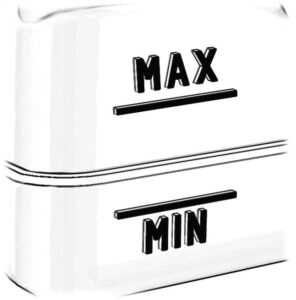
- Park your vehicle on a level surface.
- Look at the brake fluid reservoir to see where the brake fluid level is relative to the MIN and the MAX marks on the reservoir.
Note: If the brake fluid level is between the MIN and the MAX marks on the reservoir, it is acceptable.
Note: If the brake fluid level is below the MIN mark or above the MAX mark, have your vehicle checked as soon as possible.
Note: To avoid fluid contamination, the reservoir cap must remain in place and fully tight, unless you are adding fluid.
Only use fluid that meets our specifications.
Brake Fluid Service Interval
Brake fluid absorbs water over time which degrades the effectiveness of the brake fluid. Change the brake fluid at the specified intervals to prevent degraded braking performance.
For detailed interval information, see Scheduled Maintenance in your Owner’s Manual or your local maintenance guide.
POWER STEERING FLUID CHECK
Your vehicle is equipped with an electric power steering (EPS) system. There is no fluid reservoir to check or fill.
CHANGING THE 12V BATTERY -GASOLINE
WARNING: Batteries normally produce explosive gases which can cause personal injury. Therefore, do not allow flames, sparks or lighted substances to come near the battery. When working near the battery, always shield your face and protect your eyes. Always provide correct ventilation.
WARNING: When lifting a plastic-cased battery, excessive pressure on the end walls could cause acid to flow through the vent caps, resulting in personal injury and damage to the vehicle or battery. Lift the battery with a battery carrier or with your hands on opposite corners.
WARNING: Keep batteries out of reach of children. Batteries contain sulfuric acid. Avoid contact with skin, eyes or clothing. Shield your eyes when working near the battery to protect against possible splashing of acid solution. In case of acid contact with skin or eyes, flush immediately with water for a minimum of 15 minutes and get prompt medical attention. If acid is swallowed, call a physician immediately.
WARNING: Battery posts, terminals and related accessories contain lead and lead compounds, chemicals known to the State of California to cause cancer and reproductive harm. Wash your hands after handling.
WARNING: This vehicle may have more than one battery. Removing the battery cables from only one battery does not disconnect your vehicle electrical system. Make sure you disconnect the battery cables from all batteries when disconnecting power. Failure to do so may cause serious personal injury or property damage.
WARNING: For vehicles with Auto-Start-Stop the battery requirement is different. You must replace the battery with one of exactly the same specification.
The battery is in the engine compartment.
Your vehicle has a maintenance-free battery. It does not require additional water during service.
If the vehicle battery has a cover and vent hose, make sure you correctly install it after cleaning or replacing the battery.
For longer, trouble-free operation, keep the top of the battery clean and dry and the battery cables tightly fastened to the battery terminals. If any corrosion is present on the battery or terminals, remove the cables from the terminals and clean with a wire brush. You can neutralize the acid with a solution of baking soda and water.
We recommend that you disconnect the negative battery cable terminal from the battery if you plan to store your vehicle for an extended period.
Note: If you only disconnect the negative battery cable terminal, make sure it is isolated or placed away from the battery terminal to avoid unintended connection or arcing.
If you replace the battery make sure it matches the electrical requirements of your vehicle.
If you disconnect or replace the battery and your vehicle has an automatic transmission, it must relearn its adaptive strategy. Because of this, the transmission may shift firmly when first driven. This is normal operation while the transmission fully updates its operation to optimum shift feel.
Battery Sensor Reset
When you install a new battery, reset the battery sensor by doing the following:
- Switch the ignition on, and leave the engine off.
Note: Complete Steps 2 and 3 within 10 seconds. - Flash the high beam headlamps five times, ending with the high beams off.
- Press and release the brake pedal three times.
.The battery warning lamp flashes three times to confirm that the reset is successful.
Battery Management System (If Equipped)
The system monitors battery conditions and takes actions to extend battery life. If excessive battery drain is detected, the system temporarily disables some electrical systems to protect the battery.
Systems included are:
-
Heated rear window.
-
Heated seats.
-
Climate control.
-
Heated steering wheel.
-
Audio unit.
-
Navigation system.
A message may appear in the information display to alert you that battery protection actions are active. This message is only for notification that an action is taking place, and not intended to indicate an electrical problem or that the battery requires replacement.
After battery replacement, or in some cases after charging the battery with an external charger, the battery management system requires eight hours of vehicle sleep time to relearn the battery state of charge. During this time, your vehicle must remain fully locked with the ignition switched off.
Note: Prior to relearning the battery state of charge, the battery management system may temporarily disable some electrical systems.
Electrical Accessory Installation
To make sure the battery management system works correctly, do not connect an electrical device ground connection directly to the battery negative post. This can cause inaccurate measurements of the battery condition and potential incorrect system operation.
Note: If you add electrical accessories or components to the vehicle, it may adversely affect battery performance and durability. This may also affect the performance of other electrical systems in the vehicle.
Remove and Reinstall the Battery
Install a battery approved for use by our specifications.
To disconnect or remove the battery, do the following:
-
Apply the parking brake and switch the ignition off.
-
Switch all electrical equipment off, for example lights and radio.
-
Wait a minimum of two minutes before disconnecting the battery.
Note: The engine management system has a power hold function and remains powered for a period of time after you switch the ignition off. This is to allow the system to store diagnostic and adaptive tables. Disconnecting the battery without waiting can cause damage not covered by the vehicle warranty.
-
Disconnect the negative battery cable terminal.
-
Disconnect the positive battery cable terminal.
-
Remove the battery securing clamp.
-
Remove the battery.
-
To install, reverse the removal procedure.
Note: Before reconnecting the battery, make sure the ignition remains switched off.
Note: Make sure to fully tighten the battery cables.
If you disconnect or replace the vehicle battery, you must reset the following features:
-
Window bounce-back.
-
Clock Settings.
-
Pre-set radio stations.
Battery Disposal
Make sure that you dispose of old batteries in an environmentally
friendly way. Seek advice from your local authority about recycling old batteries.
CHANGING THE 12V BATTERY -PLUG-IN HYBRID ELECTRIC VEHICLE (PHEV)
FAQs
The owner’s manual will typically specify the viscosity range within which the recommended engine oil for the Aviator falls; this oil is typically full synthetic.
The owner’s manual will typically specify the oil change interval for the Aviator, which is typically every few thousand miles or as the car’s maintenance system indicates.
To ensure best performance and longevity, it is advised to use engine oil that complies with the owner’s manual’s specifications.
Certainly, a lot of contemporary cars—like the Aviator have oil life monitoring systems that determine how much oil deterioration occurs depending on the driving circumstances.
The owner’s manual for the Aviator usually contains a procedure for checking the oil levels. This procedure usually involves making sure the car is on a level surface and that the engine is off for a precise measurement.
Transmission fluid, coolant, brake fluid, power steering fluid, and differential fluid are additional essential fluids that need to be periodically inspected and maintained.
There may be low fluid level warning lights or indicators on the Aviator’s dashboard. Regular visual inspections are also advised during maintenance checks.
The owner can frequently perform simple tasks like topping off windshield washer fluid. However, skilled technicians might be best suited to handle more difficult jobs or fluid replacements.
To ensure compatibility and optimal performance, the owner’s manual typically outlines the recommended coolant type and specifications.
The owner’s manual frequently specifies the Aviator’s transmission fluid change intervals, which may change depending on the road conditions.
Using the wrong fluids can cause malfunctions or harm to different car systems. Using the fluids that the manufacturer recommends is essential.
Visible wetness around components or spots on the ground beneath the vehicle could be signs of a fluid leak.* Any indication of a leak should be fixed right away.
Reserved fluids can be kept in a cool, dry location away from harsh sunlight and temperatures to preserve their integrity.*
If improper maintenance results in damage or performance problems that can be traced back to the neglect, it may have an impact on the warranty.
Before utilizing aftermarket additives, it’s best to check with the owner’s manual or a qualified technician as some may not be required or compatible.
Useful Link
View Full PDF : 2023 Lincoln Aviator Owner’s Manual| Auto User Guide 2023 Lincoln Aviator Cruise Control and Adaptive Cruise Control System


